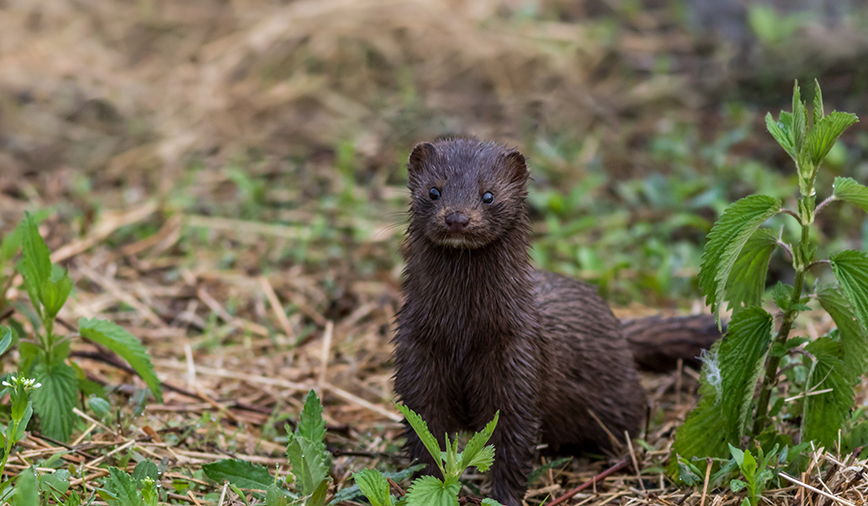April 6, 2012
Last weekend, the St. Charles Park District held its annual Easter Egg Hunt at Pottawatomie Park. Thousands of eggs, hundreds of kids…a good, albeit chilly, time was had by all.
While that egg hunt is over, another one is just beginning. We’re on the verge of waterfowl nesting season, and ducks and geese throughout the Fox River valley are staking out territories, preparing nests and, yep, laying eggs.
Which reminds me, (as I’m sure it will you) that this is a great time of year to catch a glimpse of a mink.
That’s right, mink. Those same animals you see draped on collars and coats, accompanied by silk scarves and maybe a spritz of something by Chanel, actually are fairly common residents of our Fox River watershed. While they tend to steer clear of organized Egg Hunts, they do frequent streambanks, ponds and wetlands throughout the area, hunting prey. Their diet includes all manner of rodents, fish, frogs and, this time of year, eggs–particularly those of waterfowl.
Our local ducks and geese produce an average of one egg per day, and may produce a dozen eggs or more in a two-week period. But they do not begin incubating until the entire clutch has been laid. Until then, Mom duck will often leave her nest unattended for hours at a time, having covered the eggs with down, while she goes out foraging for a meal of her own.
Page 1 of 2 Talk about opportunity. Eggs by the dozen, all of them perfectly fine food; none of them able to put up a fight. When you think about things from the mink’s point of view, what could be an easier meal?
Outfitted with a superb sense of smell, mink are well adapted to finding such food sources, and are willing to go to extraordinary lengths to obtain them. I remember watching one industrious mink clamber 15 feet up an oak tree to raid a wood-duck nest box. Adept at climbing, mink are not, but for this individual the arduous trek was worth it. When the mink finally emerged from the box, its face was smeared with egg yolk and tiny bits of shell flecked its fur. Mink can’t smile but, if they could, I’m sure that fellow would have been sporting a big ol’ egg-eating grin.
Although their hunting habits are fascinating, at least to naturalists, mink undoubtedly are most famous for their fur. Their coat is characterized by long, lustrous guard hairs over a soft, dense coat of underfur. Wild mink vary in color from chocolate brown to near black above, with somewhat lighter brown fur below. Most also have a white spot on the chin, which may continue along the underside. Each of these marks is unique, and can be used to distinguish one mink from another.
Despite their association with luxury, mink are fairly typical members of the weasel, or mustelid, family. They possess a pair of scent glands under the tail, the odor of which is quite strong. In fact, the common name “mink” stems from the Swedish maenk which, according to some sources, means “stinking animal from Finland.”
With egg-laying season about to hit full stride, mink will be on the move, taking advantage of the bountiful buffet. If you find yourself near a local waterway or wetland, especially in the early morning or late evening, look for a dark, thin-bodied animal, low to the ground and about two feet long. Mink move fairly quickly, so watch carefully. That dark form, slinking stealthily along the streambank? It may be a mink!
Page 2 of 2

